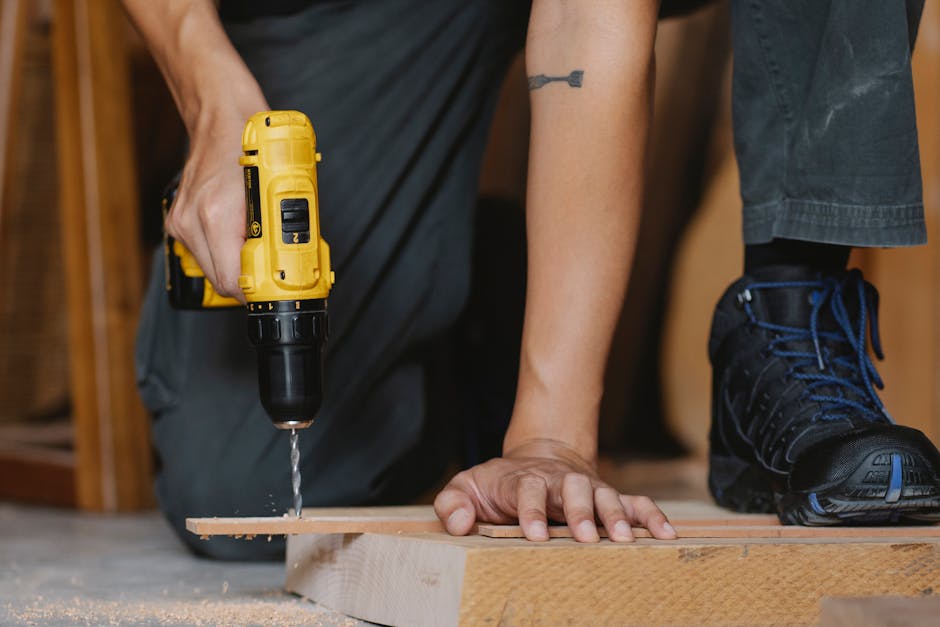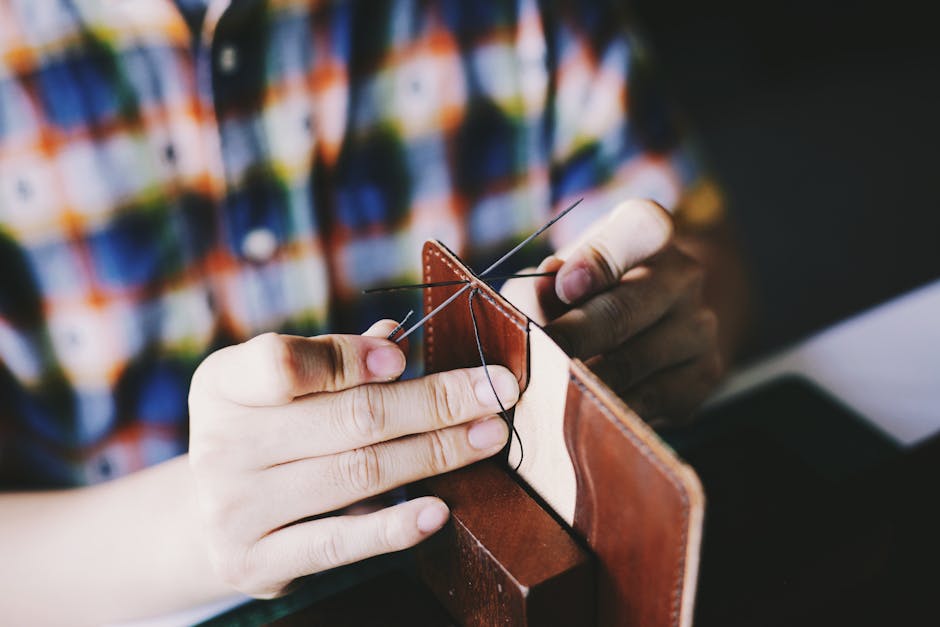Introduction
Can boots be resoled? The answer is a resounding yes! Resoling your boots can save you money, extend their lifespan, and keep your favorite pair in tip-top shape. Here’s a quick rundown for those in a hurry:
- Resoling can bring your boots back to life.
- It’s usually cheaper than buying a new pair.
- It’s an environmentally-friendly choice.
Investing in quality boots is just the first step. The real magic happens when you resole them. This not only revives your well-worn boots but also saves you money in the long run. Think of it as rejuvenating your second skin rather than discarding it.
Furthermore, resoling is a sustainable choice. By opting to repair instead of replace, you reduce waste and make a positive impact on the environment. Skilled cobblers, like those at NuShoe, ensure your boots stay durable and comfortable for years to come.

Can Boots Be Resoled?
Identifying Resoleable Boots
Can boots be resoled? The answer depends on their construction. Not all boots are designed for easy resoling, but many high-quality work boots are.
Types of Boots:
1. Goodyear Welt: This method uses a strip of leather, rubber, or plastic sewn to the upper and insole. It’s known for durability and ease of resoling. The stitching is visible, making it easy to spot.
2. Stitchdown Construction: The upper is flanged out and stitched directly to the midsole. This method is highly durable and weather-resistant. It’s common in boots designed for heavy-duty use.
3. Blake Stitch: The upper is directly stitched to the sole. While not as durable as Goodyear welt or Stitchdown, it still allows for resoling, though it may be limited to a few times.
Exposed Stitching: Look for visible stitching around the sole. This is a good indicator that the boots can be resoled.
Signs of Wear: Worn tread, holes in the soles, and uneven wear patterns are clear signs that your boots need resoling. Don’t wait until the soles are completely worn out, as this can damage the upper part of the boot.
Benefits of Resoling Boots
Cost Savings: Resoling is often much cheaper than buying a new pair of high-quality boots. For example, resoling Dr. Martens costs around $100, compared to $210 for a new pair.
Extended Lifespan: Premium boots like the JK Boots Arctic No. 2 can last for a decade with proper care and multiple resoles. The thick, durable leather and high-quality construction make them worth the investment.
Maintaining Fit and Comfort: Once you’ve broken in your boots, they fit like a glove. Resoling allows you to keep that perfect fit without starting the break-in process all over again.
By understanding these key points, you’ll be better equipped to decide if your boots can be resoled and why it’s a smart choice. Next, we’ll guide you through the step-by-step process of resoling your boots.
How to Resole Boots: Step-by-Step Guide
Tools and Materials Needed
Before you start resoling your boots, gather the essential tools and materials. Here’s a quick list:
- Cobbler tools: Hammer, pliers, knife, awl, and lasting pliers.
- Adhesives: High-strength contact cement or shoe glue.
- Replacement soles: Choose based on your needs—leather, rubber, or foam.
- Other materials: Sandpaper, thread (if stitching is required), and a sewing machine for Goodyear welt or Stitchdown construction.
Preparation
1. Clean Your Boots
Start by thoroughly cleaning your boots. Remove any dirt, grime, or old adhesive from the soles. This ensures a smooth surface for the new sole to adhere to.
2. Remove the Old Sole
Use a knife or pliers to carefully detach the old sole. Be gentle to avoid damaging the upper part of the boot. If your boots have a Goodyear welt, you’ll need to cut the stitching that holds the sole to the welt.
Removing Old Sole
1. Detach the Heel
If your boots have a separate heel, start by removing it. Use the pliers to pull out any nails or screws.
2. Separate the Sole
Use a knife to slice through any remaining adhesive. For boots with a stitched construction, cut the stitches holding the sole in place.
Attaching New Sole
1. Apply Adhesive
Spread a thin layer of contact cement or shoe glue on both the new sole and the bottom of the boot. Let it dry for a few minutes until it becomes tacky.
2. Press and Secure
Carefully align the new sole with the boot and press firmly. Use a hammer to ensure a tight bond, especially around the edges. For stitched boots, use an awl to punch holes and a sewing machine to stitch the new sole to the welt.
Finishing Touches
1. Trim Excess Material
Once the new sole is securely attached, trim any excess material using a knife. Sand the edges to create a smooth finish.
2. Reattach the Heel
If your boots have a separate heel, glue and nail or screw it back into place.
3. Final Inspection
Check for any loose areas or gaps. Apply additional adhesive if needed and allow the boots to cure for 24 hours before wearing them.
DIY vs Professional Resoling
Pros and Cons of DIY Resoling
- Pros:
- Cost-effective
- Immediate results
-
Satisfaction of doing it yourself
-
Cons:
- Requires skill and tools
- Risk of damaging the boots
- Time-consuming
When to DIY
DIY resoling is suitable if you have basic cobbler skills and the necessary tools. It’s also a good option for less expensive boots or if you enjoy hands-on projects.
When to Seek a Professional
If your boots are high-end or have complex construction like Goodyear welt or Stitchdown, it’s best to seek a professional. Cobblers have the expertise and tools to ensure a high-quality resole. For example, Dr. Martens offers a specialized repair service to maintain their boots’ durability and fit.
Next, we’ll dive into the cost of resoling boots and compare it with the cost of buying new ones.
Cost of Resoling Boots
When considering resoling boots, understand the costs involved and how they compare to buying new boots. Let’s break it down.
Average Costs
The cost of resoling boots can vary widely depending on several factors. On average, you can expect to pay between $80 to $150 for a resole. Factors that affect the cost include:
- Type of boots: Work boots, dress boots, and hiking boots may have different cost structures.
- Extent of damage: More extensive repairs will cost more.
- Materials used: Leather, rubber, or specialized soles like Vibram can influence the price.
- Location and cobbler: Prices can vary based on where you live and the expertise of the cobbler.
Factors Affecting Cost
Several factors can affect the cost of resoling your boots:
- Type of Sole: Rubber soles are generally less expensive than leather soles.
- Construction Method: Goodyear welt and Stitchdown constructions are usually more expensive to resole due to their complexity.
- Additional Repairs: If your boots need more than just a new sole, such as heel replacement or stitching repairs, this will add to the cost.
Cost Comparison with New Boots
Buying new boots can be significantly more expensive than resoling. High-quality boots can cost anywhere from $200 to $600. Resoling, on the other hand, can extend the life of your existing boots, offering a cost-effective alternative. For example, Thorogood boots, which can cost upwards of $250 new, can be resoled for around $100-$150, saving you money in the long run.
Full Sole vs Half Sole
Full Sole Replacement
A full sole replacement involves completely removing the old sole and attaching a new one. This is ideal for boots with significant wear or damage. Full sole replacements generally cost between $80 to $150.
Half Sole Replacement
A half sole replacement involves replacing only the front part of the sole. This is a cheaper alternative, costing around $25 to $55. However, it requires a skilled cobbler to ensure a seamless transition between the old and new parts.
Popular Resole Services
Several companies offer specialized resoling services for different types of boots:
-
NuShoe: Known for their comprehensive restoration packages, NuShoe offers services for brands like Dr. Martens, Ariat, and Thorogood. Their packages can include new soles, midsoles, laces, and even a clean and polish.
-
Thorogood: Thorogood offers specialized restoration services that include replacing outsoles, midsoles, insoles, and laces. Their services also come with a thorough cleaning and reconditioning of the leather, ensuring your boots look and feel almost new.
-
Dr. Martens: Dr. Martens has recently started offering their own repair service, focusing on maintaining the brand’s durability and fit. This service is ideal for those who want to keep their iconic boots in top condition.
Next, we’ll look at how to identify when it’s time to resole your boots and the signs to watch for.
When to Resole Your Boots
Common Signs Your Boots Need Resoling
Knowing when to resole your boots can save you money and keep you comfortable and safe. Here are some common signs that it’s time for a resole:
-
Worn Tread: If the tread on your boots is worn down, you may notice less traction. This can be dangerous, especially in slippery conditions.
-
Holes in Soles: Holes are a clear sign that your boots are overdue for a resole. If you can see cork or the underside of the footbed, stop wearing them immediately and take them to a cobbler.
-
Uneven Wear Patterns: Uneven wear, especially at the heel, can affect your gait and lead to discomfort. Even if it’s just the heel, it’s a good idea to get a cobbler to look at it.
-
Paper-Thin Leather: If the leather or rubber on the bottom of your boots is thin, you’re likely walking on the welt. This can lead to more extensive and costly repairs if not addressed promptly.
-
Comfort Issues: Over time, you might forget what a comfortable pair of boots feels like. If your boots are no longer as supportive or comfortable as they used to be, it may be time for a resole.
Ignoring these signs can lead to more expensive repairs down the line and even safety issues, like slips and falls.
How Often Should You Resole?
How often you need to resole your boots depends on several factors:
-
Usage Frequency: If you wear your boots daily, you’ll need to resole them more often. For work boots, this could be every 6 to 12 months.
-
Work Environment: Boots used in harsh conditions will wear out faster. Wet, uneven, or abrasive environments can shorten the lifespan of your soles.
-
Boot Quality: Higher-quality boots tend to last longer and can often be resoled multiple times. Brands like Wolverine and Thorogood are built to withstand multiple resoles.
-
Signs of Wear: Always keep an eye out for the common signs we mentioned earlier. Regular inspections can help you catch issues before they become severe.
By paying attention to these factors, you can extend the life of your boots and maintain their comfort and safety.
Next, we’ll delve into the different types of boot construction and how they impact the resoling process.
Types of Boot Construction and Their Impact on Resoling
Goodyear Welt Construction
The Goodyear welt is a popular method for high-quality boots. Invented by August Destouy and improved by Charles Goodyear Jr., this method involves stitching a strip of leather, rubber, or plastic (the welt) to the upper and insole of the boot.
Process:
1. Stitching the Welt: The upper part of the shoe is shaped over the last and stitched to the insole and welt.
2. Filling the Cavity: The cavity created by the welt is filled with cork or foam for cushioning.
3. Attaching the Sole: The outsole is cemented and stitched to the welt.
Benefits:
– Durability: Goodyear welt boots are known for their durability and can be resoled multiple times.
– Water Resistance: The construction minimizes water penetration, making these boots relatively waterproof.
– Easy Resoling: The welt makes it easier to remove and replace the sole without damaging the upper.

Stitchdown Construction
Stitchdown construction is another method that offers excellent durability and ease of resoling. Brands like JK Boots use this method for its robustness and weatherproofing capabilities.
Process:
1. Flanging the Upper: The leather upper is flanged out and stitched directly to the midsole.
2. Attaching the Sole: The sole is then either stitched or glued to the midsole.
Benefits:
– Extended Lifespan: Boots with stitchdown construction are often made from high-quality materials, allowing for multiple resoles.
– Maintains Fit and Comfort: The construction method helps retain the boot’s shape and fit even after resoling.
– Durability: The stitching method adds an extra layer of durability, making the boots feel as robust as new.

Blake Stitch Construction
Blake stitch is a simpler and more streamlined method compared to Goodyear welt and stitchdown. It involves stitching the upper directly to the outsole.
Process:
1. Single Stitching: The upper is stitched directly to the outsole, often using the same stitching holes for multiple resoles.
Benefits:
– Flexibility: Blake stitch boots are generally more flexible and lighter than Goodyear welt or stitchdown boots.
– Sleek Design: This method allows for a sleeker, more elegant design.
Limitations:
– Fewer Resoling Opportunities: Over time, the stitching holes can become worn, making multiple resoles challenging.
– Less Water Resistance: This method is less effective at keeping water out compared to Goodyear welt or stitchdown construction.

Each construction method has its unique benefits and limitations, impacting the ease and cost of resoling. Understanding these differences can help you decide which type of boot is best for your needs.
Next, we’ll explore the step-by-step guide to resoling boots, including the tools and materials you’ll need.
Frequently Asked Questions about Resoling Boots
Is it Worth It to Resole Boots?
Absolutely! Resoling boots can save you a lot of money in the long run. Instead of buying a new pair, you can extend the life of your favorite boots for a fraction of the cost. For instance, resoling a high-quality pair of boots like Red Wing boots can cost between $80 to $150, compared to spending $300 or more on a new pair.
Moreover, comfort is another key reason to resole. You’ve already broken in your boots, and they fit your feet perfectly. A resole means you keep that perfect fit without the discomfort of breaking in a new pair.
How Can You Tell if Your Boots Can Be Resoled?
Construction Methods: The type of construction is crucial. Boots made with Goodyear welt, stitchdown, or Blake stitching are generally resoleable. Look for exposed stitching around the sole, which is a good indicator.
Signs of Wear: Check for worn tread, holes in the soles, or uneven wear patterns. If the upper part of the boot is still in good condition, a resole can breathe new life into them.
Can Boots Be Completely Resoled?
Yes, boots can be completely resoled. This involves removing the entire old sole and attaching a new one. There are also partial resoles, like replacing just the half sole or adding a rubber protector for added grip.
However, there are limitations. If the upper leather is cracked or the welt is damaged, it might not be worth the cost of repairing. Always consult with a professional cobbler to assess the condition of your boots. For example, Dr. Martens offers a repair service that can replace worn-out soles, ensuring your boots last longer.
In summary, resoling can be a cost-effective way to extend the life of your boots, maintain comfort, and keep your favorite pair in rotation.
Conclusion
Resoling your boots is a smart move for sustainability, cost-effectiveness, and extending the life of your favorite pair. At NuShoe, we specialize in giving your boots a new lease on life, ensuring they remain as comfortable and durable as ever.
Sustainability
Resoling is more than just a fix; it’s a sustainable choice. By opting to resole your boots, you’re reducing waste and making a positive impact on the environment. Brands like Dr. Martens are now offering repair services to encourage this eco-friendly practice.
Extending Boot Life
Quality boots can last for years, even decades, with proper care. Resoling is a key part of that care. By replacing worn-out soles, you can keep the uppers—which often mold perfectly to your feet—in great condition. This means your boots will continue to offer the same comfort and support you’ve come to love.
Cost-Effectiveness
Resoling is often more cost-effective than buying a new pair of boots. High-quality boots can be resoled multiple times, making your initial investment go much further. For example, replacing the sole on a pair of Dr. Martens costs significantly less than buying a new pair.
By choosing to resole, you’re not just saving money; you’re also preserving the value of a well-made product. This is especially true for boots made with Goodyear welt or Stitchdown construction, which are designed to be easily resoled.
For expert resoling services, visit NuShoe’s boot repair page. Our skilled craftsmen are dedicated to extending the life of your boots while maintaining their original quality and comfort.
In summary, resoling is a practical and sustainable way to keep your boots in top shape. It saves you money, benefits the environment, and allows you to continue enjoying the comfort and style of your favorite footwear. Don’t wait until it’s too late—get your boots resoled and give them the care they deserve.
